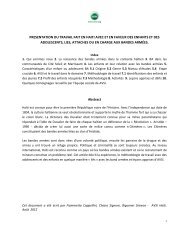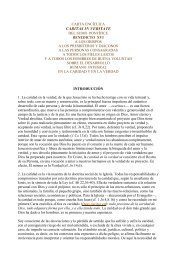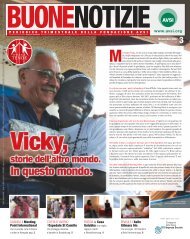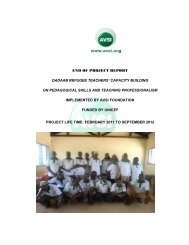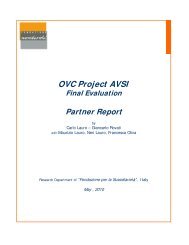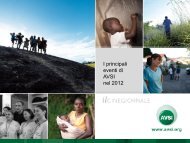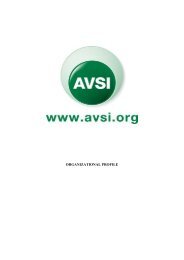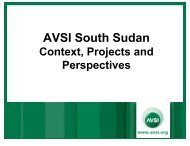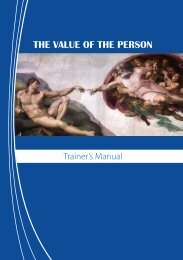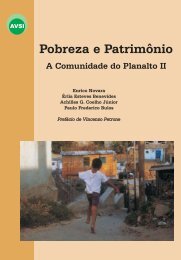Mine risk education training module - Avsi
Mine risk education training module - Avsi
Mine risk education training module - Avsi
You also want an ePaper? Increase the reach of your titles
YUMPU automatically turns print PDFs into web optimized ePapers that Google loves.
Out of the Ottawa Convention, an international effort called the<br />
Humanitarian <strong>Mine</strong> Action Program developed. It focuses on some<br />
important aspects of the problems associated with mines.<br />
Survivor Assistance<br />
Support services available for victims<br />
(i.e. medical, rehabilitative,<br />
psychosocial, vocational, etc)<br />
<strong>Mine</strong> Risk Education<br />
Awareness <strong>training</strong>s to inform the<br />
community on the dangers of mines<br />
and UXO<br />
Survey and assessment<br />
<strong>Mine</strong>s are located, evaluated and<br />
reported to international bodies<br />
<strong>Mine</strong> clearance<br />
Trained professionals use specific<br />
machines or techniques to clear mines<br />
Stockpile Destruction<br />
Recovered and stockpiled mines are<br />
destroyed<br />
This <strong>module</strong> is part of the global effort to<br />
educate the population on the <strong>risk</strong>s of<br />
mines and UXO . Similar awareness<br />
<strong>training</strong>s are taking place in mine-affected<br />
countries throughout the world.<br />
A survivor learns to use her<br />
new limb, Gulu Regional<br />
Orthopedic Workshop.<br />
Anti-tank and anti-personnel<br />
mines and other ammunition.<br />
APPROACH TO TRAINING<br />
In order to fully understand the concepts presented in this Module, it is<br />
important to recognize the theoretical approach used.<br />
Prevention Activity<br />
First and foremost, the MRE <strong>training</strong>s are a prevention activity, with the<br />
main goal of reducing the number of injuries and deaths caused by mines<br />
and UXO. In this case prevention is attempted through sensitization of<br />
the community.<br />
Sensitization<br />
Sensitization is developing knowledge and awareness among the target<br />
audience. This knowledge serves to change attitudes and behaviors in<br />
everyday life. It involves providing accurate information, sharing of personal<br />
experiences and attitudes, and offering a practical application of the topic.<br />
This aspect of <strong>training</strong> helps the participants learn the concepts and put<br />
them into practice in their communities.<br />
Community-based<br />
The type of sensitization AVSI uses is community-based. We view a person<br />
not as an isolated individual but rather as one who belongs and interacts<br />
within a larger group, a community. Therefore, we believe that it is<br />
important to include the members of the local community in presenting<br />
and promoting the <strong>training</strong>. Those who exhibit leadership in their<br />
communities, through either formal or informal roles, are chosen for<br />
<strong>training</strong>. They in turn are responsible for sensitizing their local<br />
communities. This grass roots/bottom-up approach seems to have greater<br />
impact and sustainability than other approaches. Awareness spreads as<br />
trainers share the message with individuals, families, and community<br />
groups. These people in turn communicate the topic to the wider<br />
community.<br />
I<br />
N<br />
T<br />
R<br />
O<br />
D<br />
U<br />
C<br />
T<br />
I<br />
O<br />
N<br />
4



